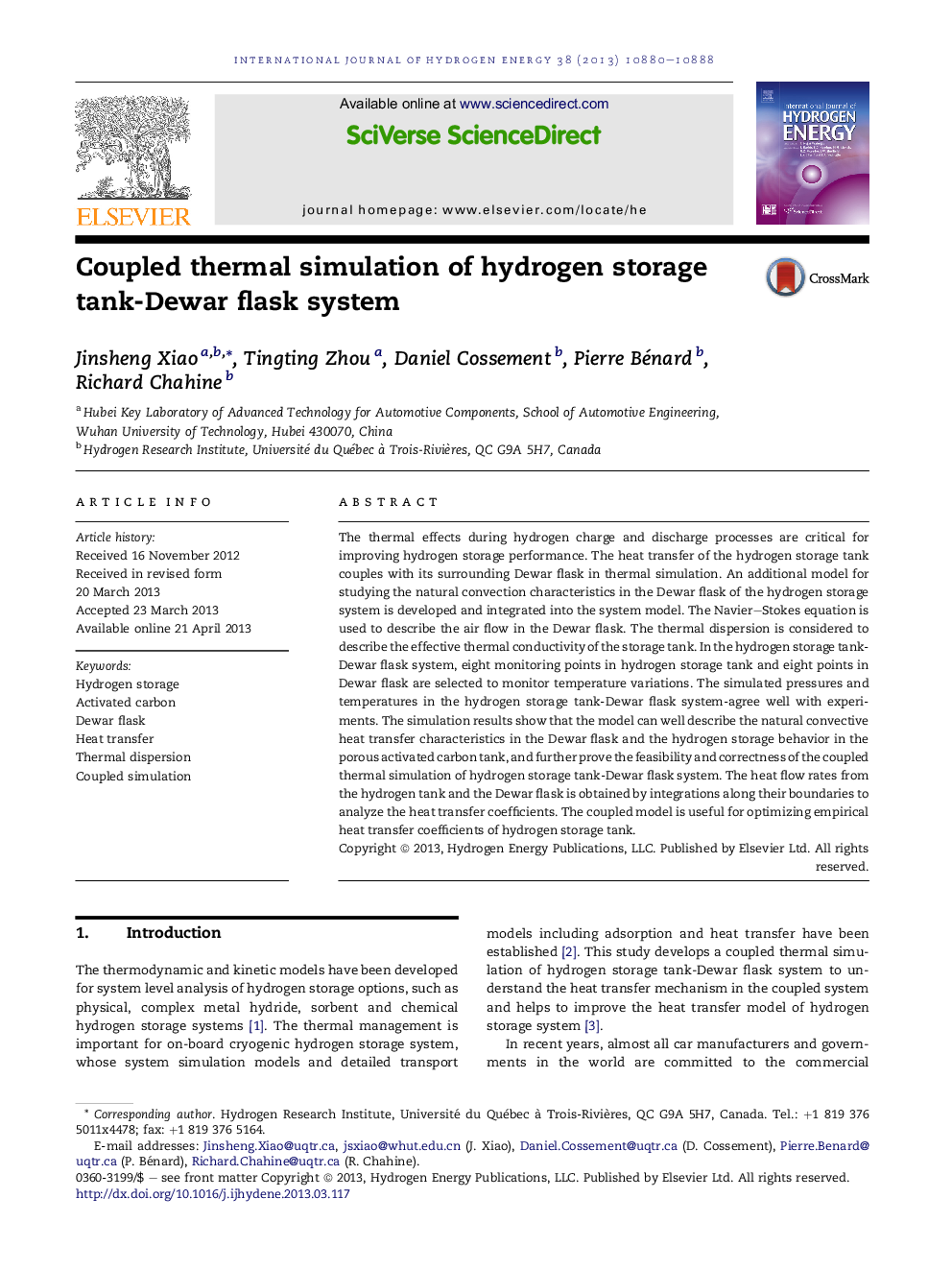| Article ID | Journal | Published Year | Pages | File Type |
|---|---|---|---|---|
| 7722821 | International Journal of Hydrogen Energy | 2013 | 9 Pages |
Abstract
The thermal effects during hydrogen charge and discharge processes are critical for improving hydrogen storage performance. The heat transfer of the hydrogen storage tank couples with its surrounding Dewar flask in thermal simulation. An additional model for studying the natural convection characteristics in the Dewar flask of the hydrogen storage system is developed and integrated into the system model. The Navier-Stokes equation is used to describe the air flow in the Dewar flask. The thermal dispersion is considered to describe the effective thermal conductivity of the storage tank. In the hydrogen storage tank-Dewar flask system, eight monitoring points in hydrogen storage tank and eight points in Dewar flask are selected to monitor temperature variations. The simulated pressures and temperatures in the hydrogen storage tank-Dewar flask system-agree well with experiments. The simulation results show that the model can well describe the natural convective heat transfer characteristics in the Dewar flask and the hydrogen storage behavior in the porous activated carbon tank, and further prove the feasibility and correctness of the coupled thermal simulation of hydrogen storage tank-Dewar flask system. The heat flow rates from the hydrogen tank and the Dewar flask is obtained by integrations along their boundaries to analyze the heat transfer coefficients. The coupled model is useful for optimizing empirical heat transfer coefficients of hydrogen storage tank.
Related Topics
Physical Sciences and Engineering
Chemistry
Electrochemistry
Authors
Jinsheng Xiao, Tingting Zhou, Daniel Cossement, Pierre Bénard, Richard Chahine,
